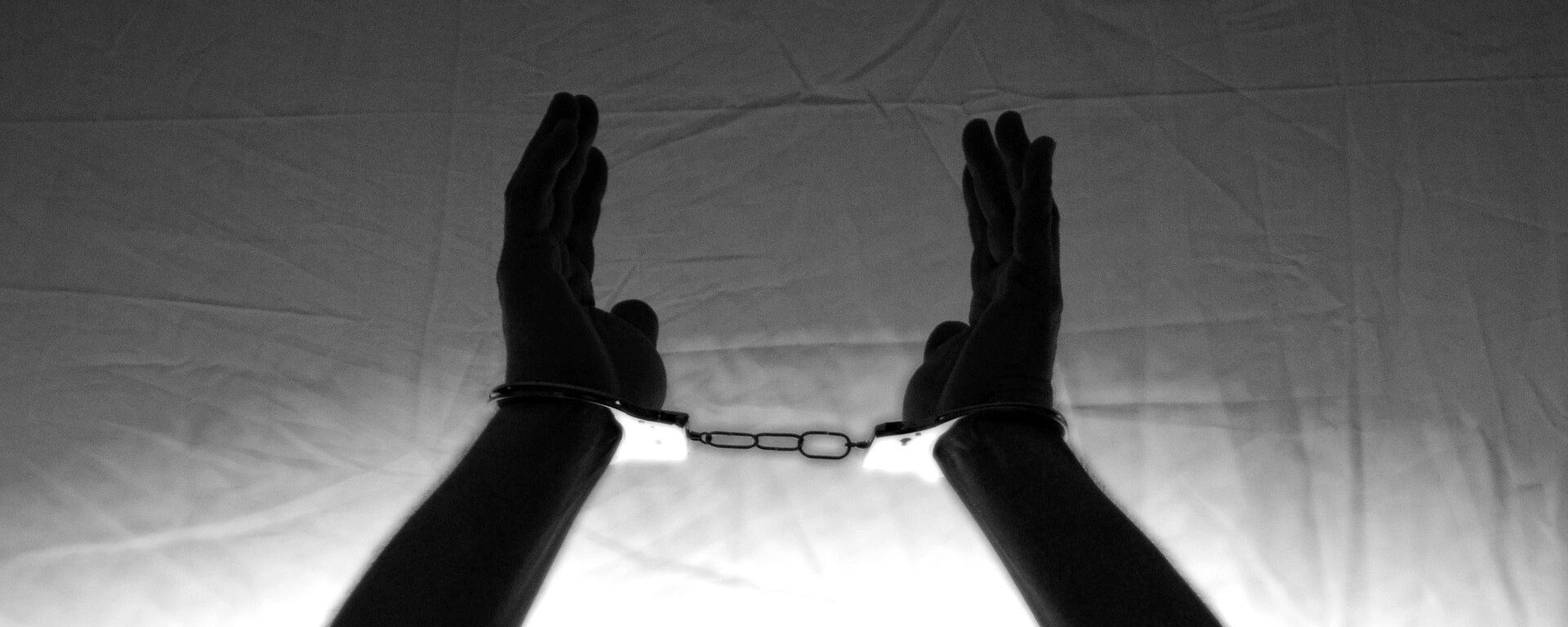How Afro-Colombian Women Braided Escape Maps and Kept Gold in Their Hair
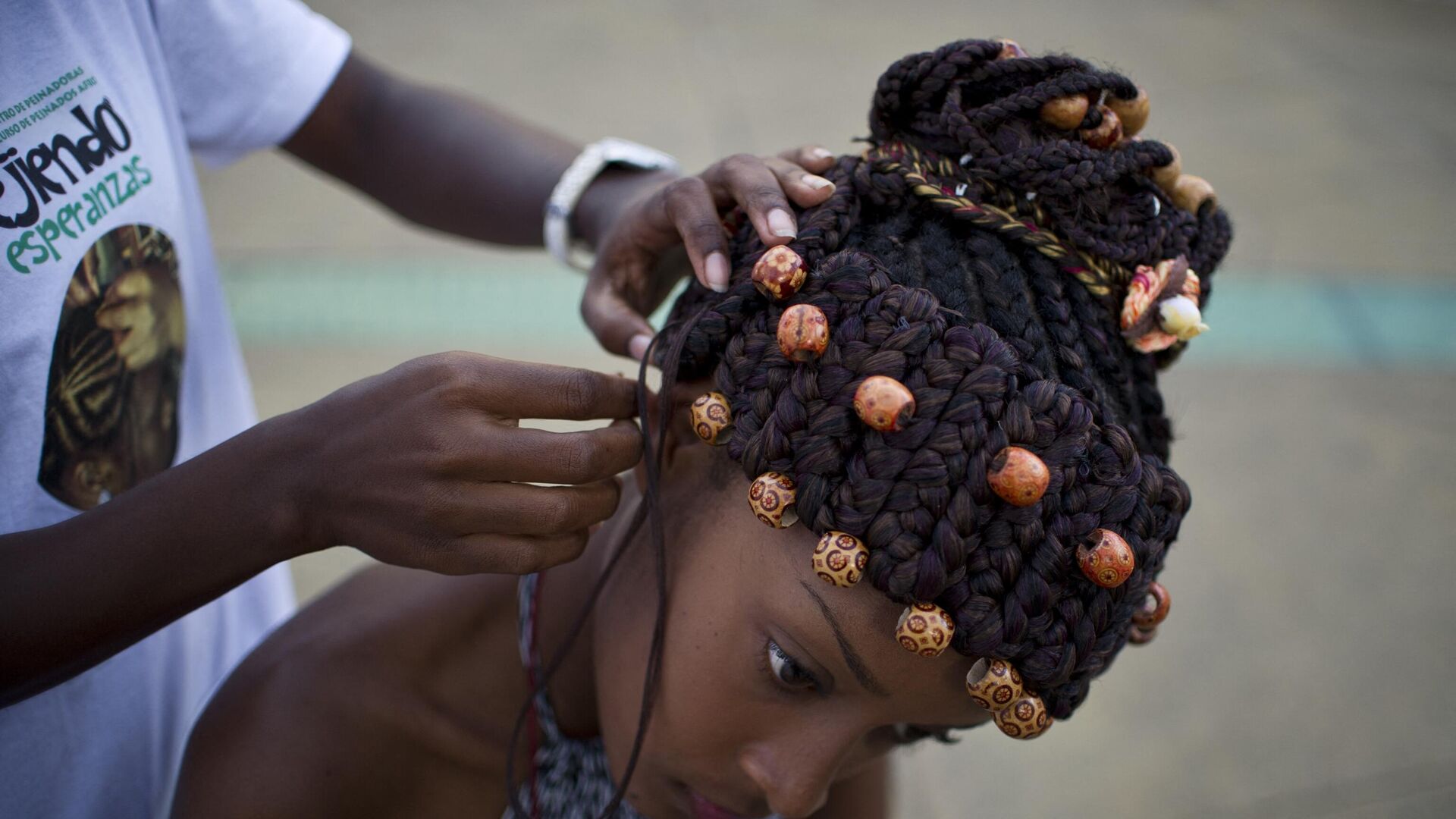
© AFP 2023 / LUIS ROBAYO
Subscribe
One of the most violent episodes in the history of the American continent is the enslavement of the black population in several of its countries. Communities taken from Africa were forced to work in the Americas under the mandate of European colonizers, whose traces remain to this day.
The Afro-descendant heritage is clear and problems of racism and discrimination from the colonial period persist in today's Colombia.
According to the Colombian government's National Department of Statistics (DANE), the black, Afro-Colombian, Raizal and Palenquero population of the South American country totals more than 4.6 million people, or 9.34% of Colombia's population.
Sputnik spoke with Afro-Colombian sociologist Lemeva Leidys Valderrama about some examples of resistance by these communities in her country, as well as the current challenges in the fight against racism.
"Much of what is said about us is said from the perspective of white people who have had the power to write history and do science and academia," she noted.
"These consequences [from colonial slavery] survive, and this epistemic racism is real and tangible, and it survives in reality; Afro-descendant populations in Colombia continue to suffer from it," Valderrama summarized.
Black King Against Slavery
At the end of the 16th century, a period in which the conquest and colonization of several territories of the American continent was consolidated in the hands of the Spanish Empire, a leader emerged against the trafficking of millions of kidnapped and enslaved people of African origin. His name was Domingo Benkos Biohó.
Probably originally from Guinea-Bissau, Benkos Biohó was kidnapped by Portuguese traffickers and sent to Cartagena de Indias, "one of the main slave ports that the Spanish had in their colonies in the Caribbean and South America" on the northern coast of Colombia.
"Benkos Biohó, along with other enslaved men and women, fled to the interior of the savannahs and mountains surrounding Cartagena de Indias because of the inhumane conditions under which they lived under the oppression of slavery. These places, inaccessible, served as a refuge and settlement for hundreds of slaves fleeing their masters," according to Señal Memoria, an initiative to preserve the audiovisual heritage of Colombia.
Thus, Palenqueros and Maroons escaping oppression developed social and cultural networks in their own communities to resist slavery in the New Kingdom of Granada, the name for the region during the colonial period.
"King Benkos Biohó is one of the greatest examples of the construction and creation of Maroonism in the Americas," said sociologist Valderrama.
In addition to his struggle for the Blacks of Colombia, this social leader led the process of building the precursors of the modern state through the organization of palenques, or free towns for escaped slaves, according to the expert consulted, made up of men and women who had escaped from slavery.
"Benkos Bihó became a leader who made it possible to transform the imaginary around the process of colonization and enslavement, showing that it was possible to escape this practice, this institution, and also that new conditions should be generated to inhabit these new territories, these territories built as palenques," Valderrama noted.
Importance of Hair
The sociologist says that Benko's Biohó remains alive in the resistance of Afro-descendant women who continue to weave their identity processes, in which hair has played a fundamental role.
"The hair was very important in the construction of these palenquero or palenquista societies, because it was there that the seeds and materials or metals that were planted in this new land, in this palenque, were kept," she noted.
Using braids and combs, these women built maps of freedom on their heads to live, in addition to saving seeds, the sociologist explained, for resistance and food supply in places of struggle.
Sociologist Lina María Vargas Álvarez, a graduate of the National University of Colombia, studied how hair was used to plan these liberation strategies. "In order to plan the escape from their masters, the women gathered around the heads of the smallest ones and, thanks to the observation from the mountains, they designed a map full of paths and escape routes, locating the highest mountains, rivers and trees," she noted in her thesis Poética del peinado colombiano (Poetics of the Colombian Hairstyle).
"People who saw them could know where to go. The language on the body, with codes unknown to the masters, allowed people to escape. Thus, hairstyles, which could have served as markers of tribal and ethnic affiliation and even social status, played a preeminent role as a beautiful but complicated and secret language for those who did not know it," the university professor added.
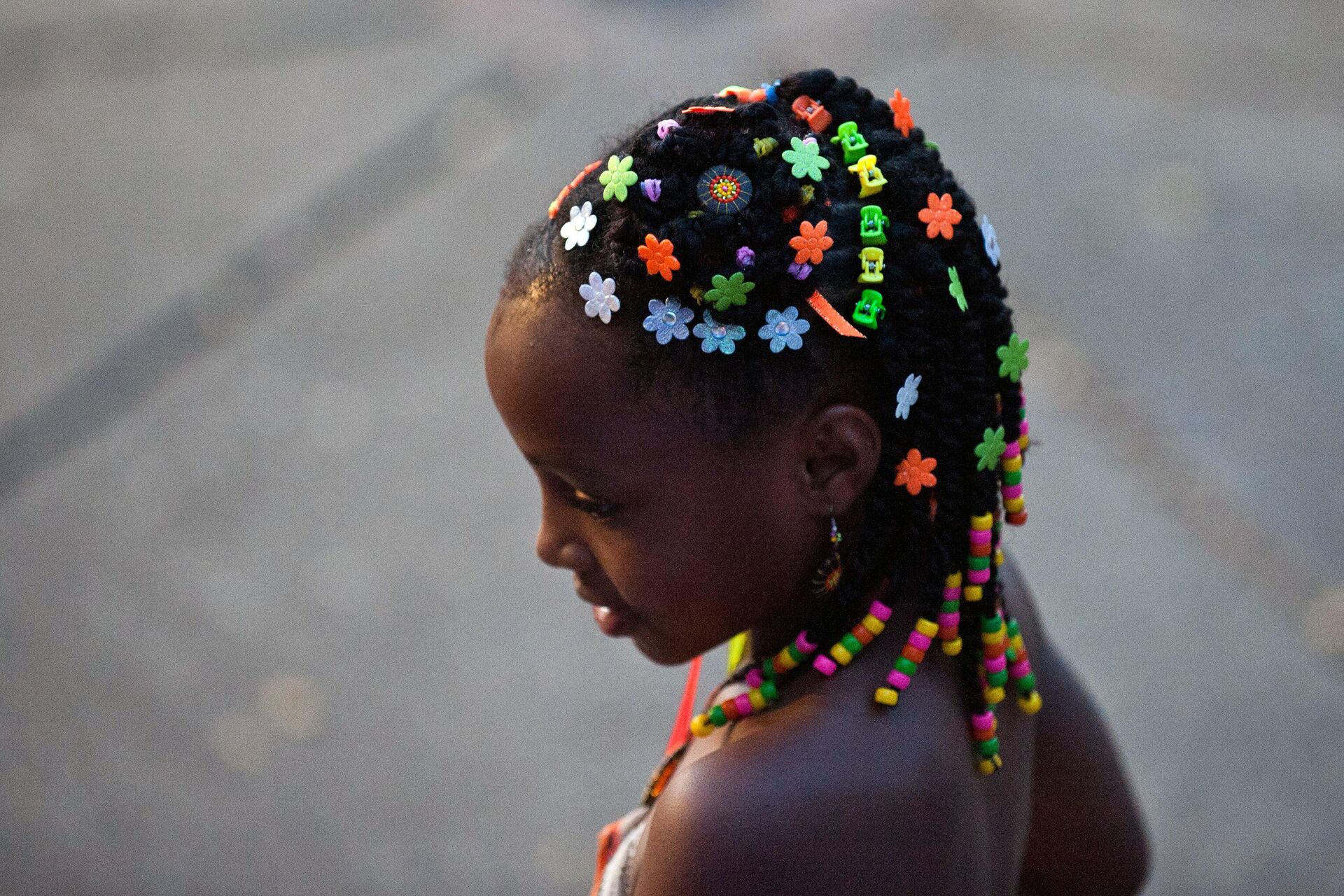
A woman presents an Afro-Colombian hairstyle during the 9th contest of Afro-hairdressers, in Cali, Valle del Cauca departament, Colombia, on May 12, 2013.
© AFP 2023 / LUIS ROBAYO
A swampy terrain was represented in the hairstyles with furrows, in addition to tracing the displacements according to the direction of the hair, Vargas Alvarez explained in a testimony collected in her academic work.
"When they went to the fields, when they went to sow, they went through the mountains, so they knew where the mountain was more, more difficult for the others to reach them, so they wove the fabric, let's say, of the strategy," she explained.
In addition to collecting seeds, Afro-descendant women also kept valuables such as gold and platinum in their hair to use to their advantage and to protect them from thieves and slavers.
Lively Gatherings Around Hair
Sociologist Vargas Álvarez also noted that hair continues to represent a meeting space, as hair salons are used by Afro-Colombian communities to meet and share, as areas of identification.
"Today, these aesthetic representations of the braiding of Afro-descendant populations, led by Afro-descendant women, continue to constitute and represent processes of resistance to generate a new vision and keep alive that ancestral legacy that allowed our ancestors to regain their freedom," Valderrama told Sputnik.
Other examples of creativity toward liberation can be found in Afro-descendant spirituality, she noted, as the ancestors used the Christianity imposed by the conquerors to hide in it the roots of their own religious creed.
"This spirituality survives and is reflected in the mortuary rites through which the dead are said goodbye, and there are different rites for different ages or different types of representations depending on the rank of leadership or importance that the person has in their community, if they are a wise man or if they are a child, the mortuary rite is different," she explained.
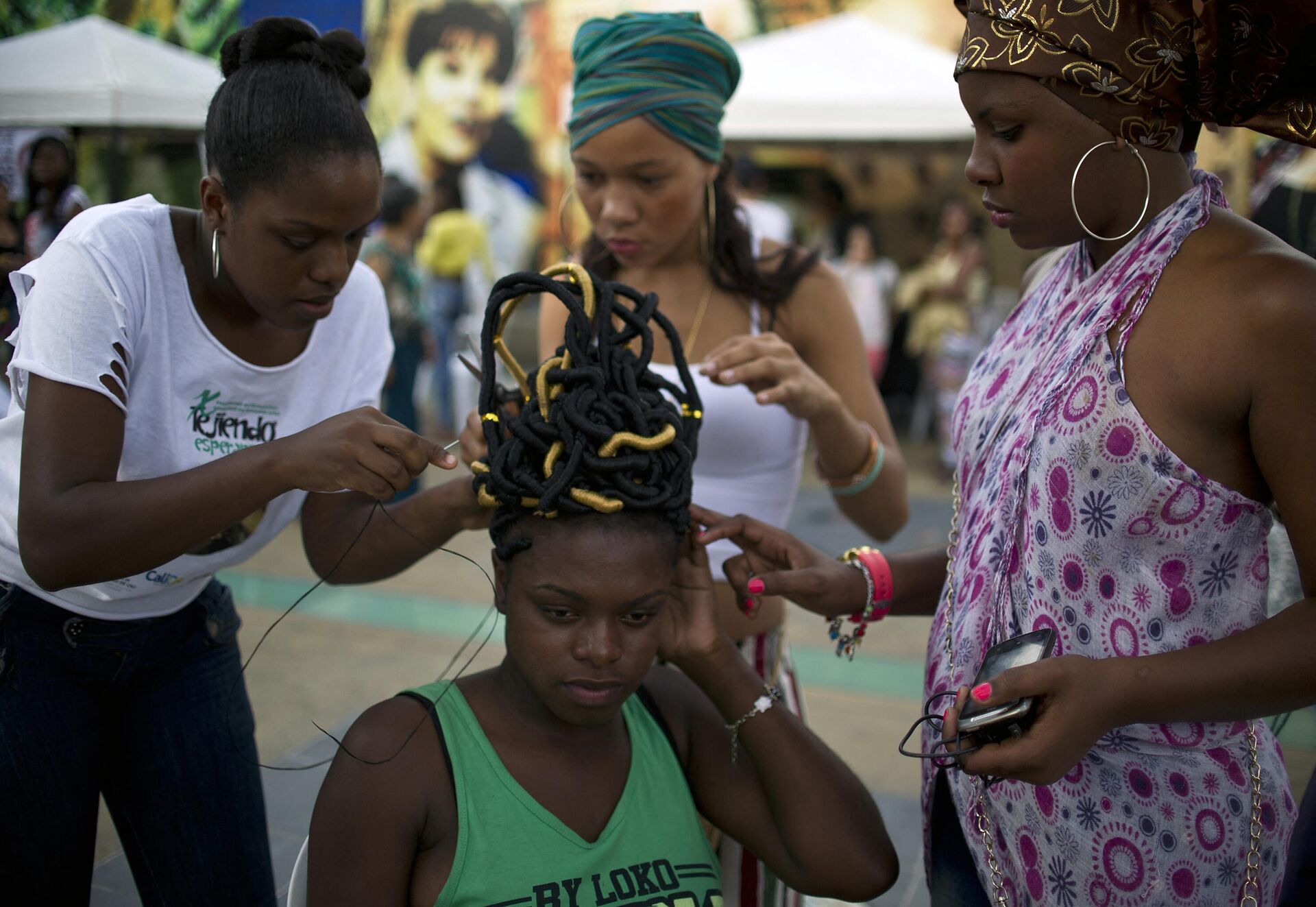
A woman makes an Afro-Colombian hairstyle during the 10th contest of Afro-hairdressers "Tejiendo Esperanzas", on June 1, 2014, in Cali, Valle del Cauca department, Colombia.
© AFP 2023 / LUIS ROBAYO
Afro-descendant deities, she described, bypassed the ideological vigilance of the Catholic Church to continue to express themselves among Colombians.
"There is also the question of language: San Basilio de Palenque created its own language, which today is a language that is part of the heritage of humanity, this language is called Palenquero," she said.
"These Maroons and libertarians built their own language using the elements of the language that was imposed in that colonization - slavery - and the elements that they managed to reserve or preserve from Africa."
Violence Still Being Exercised
Racial discrimination is still practiced in Colombia, Valderrama denounced, and it is particularly evident, as she illustrates, in the invisibility of their contributions to the process of nation-building in this South American country.
"People still think that our only contribution is in folklore, but Afro-Colombians built a nation, proposed a different vision of society, and somehow always bet on the transformation of the country through peace processes, community processes, based on dialogue processes," she said.
According to Valderrama, these populations practice the African philosophy of “Ubuntu”, which, according to the National Autonomous University of Mexico (UNAM), supports the belief that there is a universal human bond that invites mutual care through an essential connection.
University Professor Jaco Hoffman, a lecturer in South Africa, explains that the underlying concept of Ubuntu is respect for oneself and others. "So, if you are able to see others, even strangers, as full human beings, you will never treat them badly or as if they were inferior."
"Afro-descendant women's hair is still stigmatized, especially black or Afro-descendant women; there are many, many memes and very harmful publications about Afro-descendant women's aesthetics," he said.
During Colombian President Gustavo Petro's presidential campaign, the Afro-descendant Francia Márquez, Colombia's first black woman vice president, was the focus of racist attacks because of her background, Valderrama recalled.
Making Afro-Descendant President Invisible
The sociologist denounces that invisibilization contributes to the constant violence that Afro-Colombian populations continue to be accused of being ugly. A clear example of this is the erasure from history of Colombia's first Afro-descendant president.
It was not until the administration of Juan Manuel Santos (2010-2018) that the figure of Juan José Nieto Gil was recovered and his presence in Colombian political life was recognized, the expert noted.
"This shows the structural racism that survives in the genesis of Colombian society, which renders Afro-descendants invisible and only takes them into account to amuse or entertain," the sociologist lamented.
The testimonies of resistance of the black and Afro-descendant community in Colombia, despite their political eloquence, have also been erased and minimized by official history, Valderrama said.
"It has been the Afro-descendant population itself, with a minimal participation of academia, that has been able to make visible these contributions and these other realities of struggle and transformation of Afro-descendant populations," the sociologist acknowledged.
The appearance of these populations in official books was allowed only when they articulated discrimination against them and discrediting stigmas, such as accusing them of laziness or encapsulating them in prejudices such as "they were only good for dancing".
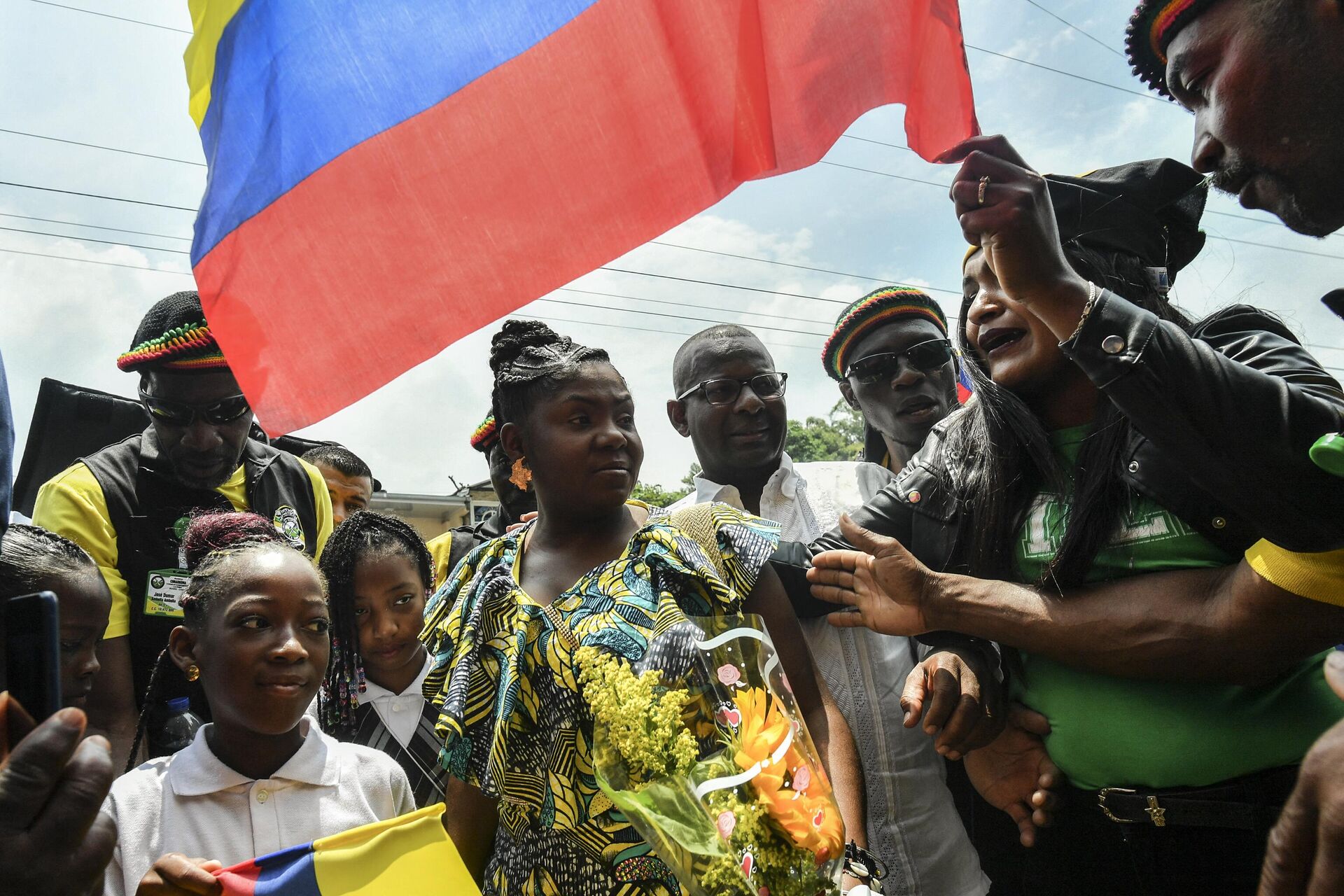
Colombian Vice-President Francia Marquez arrives for a traditional ceremony in her hometown Suarez, department of Cauca, Colombia, on August 13, 2022.
© AFP 2023 / JOAQUIN SARMIENTO
Importance of Representation
It is not in the hands of Vice President Francia Márquez to reverse a structural problem such as Colombian racism, much less with magic formulas, asserts sociologist Valderrama, but it is important to see her occupy spaces of power because it will allow boys and girls to feel capable of reaching them, more confident.
In addition, she noted that both Petro and Márquez have promoted policies that address Colombia's racial problem and open the door to the demands of these communities in a process that involves the whole country in recognizing its diversity.

